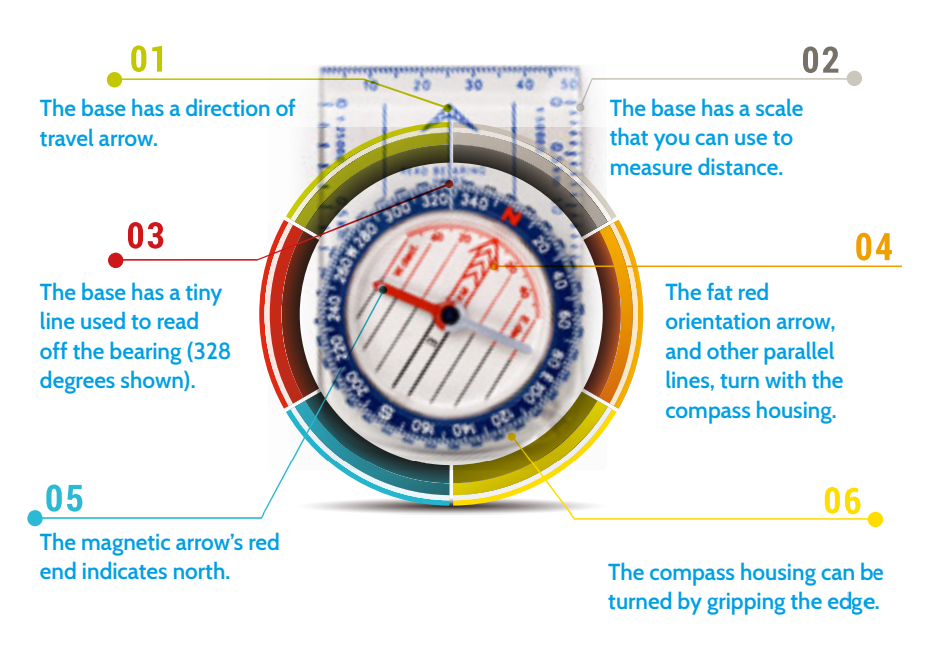Useful, clear and precise bearings are used to determine which direction you need to travel from where you are standing in order to get to a predetermined point. A bearing is a measure of the angle from North, clockwise, to the desired destination. Here is our guide to calculating and using a bearing – use the picture above for guidance. You will need a compass and an OS map.
To set the compass to a bearing using the map, put the side of the compass along your route with the direction of travel arrow (#1) pointing the way you want to go. Twist the compass housing (#6) until the fat red (orientation) arrow (#4) inside points to Grid North on the map. It helps to line up the parallel lines with the blue grid lines on the map. Take the compass off the map, account for Magnetic Variation*, and it is ready to use as below. Don’t forget that compass bearings are not so useful if you are not standing in the correct spot when you start!
Compasses should always be held flat in your palm and perpendicular in front of you, then move your body until the red magnetic arrow (#5) nestles inside the fat red (orientation) arrow (#4). Once a bearing has been set look along the direction of travel arrow (#1) and pick out an obvious feature in the distance (the farther away, the better, but do make sure it will not drop out of sight as you walk!). You can then put your compass down and concentrate on walking safely to this feature. You now don’t need to walk in a straight line.
Once at this feature you can then pick out another one along the direction of travel arrow, walk to it and repeat the process until you reach your ultimate objective.
*Magnetic variation – you can find the angle between Magnetic North and Grid North in the key on your map.
Keen to learn more? Check out our Navigation Courses.

